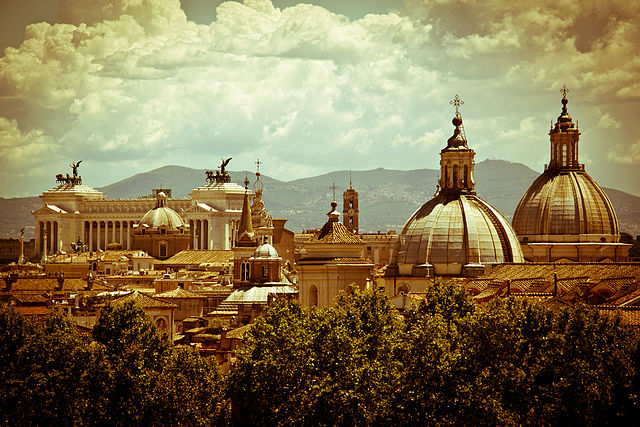
Roman rooftops have a long history, starting with Greek and Phoenician architectural influences. The Etruscans also helped the romans with technological solutions like hydraulics to help build the architectural styles that we see to this day, in Rome.
Roman rooftops and architectural styles were not just borrowed from other cultures, but also emerged out of necessity. Both wealth and population density were some of the primary driving forces. Arched roofs allowed for more total area in a minimal amount of space, allowing the Romans to create massive and impressive structures in close proximity to other buildings.
Roman Arches and Domes
Arches are one of the most well recognized Roman influences. Arches are responsible for the dome structure, famed aqueducts, and bridges. Roman arches also led to vaulted ceilings which College Station roofing contractors see across the Brazos Valley.
Truss Roofs
Roman architecture through arches and domes also led to the common roof truss. The roof truss is probably one of the most common appearances for commercial buildings. Tall commercial buildings tend to have a flat or low slope roof. However, many manufacturing warehouses use roof trusses.
A truss is a triangular unit with joints all connected. This shape is one of the strongest and most stable orientations known because of how force travels throughout the unit. When a force is applied to any side of the truss, all of the reactions to the forces occur at the node and are either tensile or compression forces. Trusses are especially prominent on a lot of railway bridges.
A Change in Building Materials
Marble was one of the most popular building materials. However, it was extremely heavy, limiting its use in building and also limiting building height and size. With the innovation of concrete, notably tile covered concrete; the Romans were able to construct the broad arches and domes that we see today.
The concrete material, while still heavy, was considerably lighter that the previously used marble. This allowed for buildings to increase in overall size. In addition to being lighter in weight, the concrete materials was able to better handle compressive, tensile, and shear forces.
The concrete used in ancient Rome was a sand, stone, water, and lime mortar aggregate. The aggregate used collected from the local environment, mixed, placed into wood frames and dried. The resulting dried mix formed bricks that were then faced with attractive stucco or thin marble sheets.
Clues to Roman Influences
Roman architectural influences are still heavily prevalent in today’s building styles. A quick look at the Texas A&M University campus, banks, government buildings, and historical houses all bear the Roman architectural resemblance.
To learn more about architectural influences and design options for your roof, contact Schulte Roofing. Schulte Roofing has been serving College Station, TX with the professional roofing for over 18 years.
Reference: The Roman Forum. Ancient Encyclopedia History. Web. 3/25/2012
Image: By Julio Aprea from Paris, France (Roman Rooftops), via Wikimedia Commons
